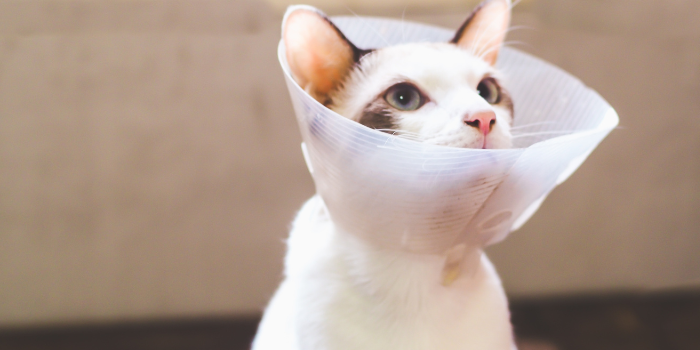Whilst we often consider desexing operations to be “routine” in pets, it’s important to remember that they are still a surgical procedure (and a particularly significant one in the case of female pets!), and potentially serious complications can sometimes occur.
Whilst we always do our best to minimise the chances of surgical or anaesthetic issues while your pet is in the hospital, it’s just as vital that you stick to the recommended aftercare instructions to help ensure your pet has a smooth recovery.
Here are two of the most common post-desexing complications, and how you can help to prevent them:
1. Wound infection
Desexing wound infections are uncommon but are much more likely to occur if your pet has been allowed to lick at their operation site.
Ensure that your pet does not lick its wound by consistently using an Elizabethan (bucket) collar, a properly fitted inflatable collar, or (in the case of female cats) a snugly fitting body suit.
If you notice any increased redness or discharge from your pet’s wound, bringing them back for a check as promptly as possible is essential.
2. Excessive wound swelling and/or pain
Imagine if we had a major abdominal or “downstairs” surgery and then went running a few days later? We’d likely experience significant pain and swelling, and our unhealed wound could even rip open (ouch!).
It’s important to keep your pet confined and rested (except for short, on-lead toileting walks in the case of dogs) for 10-14 days post-operatively to help their wound heal as smoothly and comfortably as possible. If your pet is very active, ask us about post-operative sedation options.
If you notice any significant swelling, lumpiness, or other changes at your pet’s surgical site, it’s best to bring them back as promptly as possible for a recheck with our experienced team.
As they say, a stitch in time saves nine!

